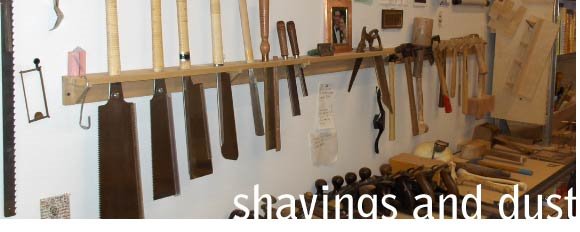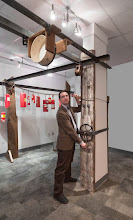If we are looking at craft and artisanry in Japan, the woodwork has to be a part of the conversation. In Kyoto especially we were surrounded by it, of course, and it has started to be a bit of a joke with the students when we walk in to a space that has a lot of wood they immediately start to watch me to see what kind of moaning and oohing and aahhhing is going to come out of my mouth. I see this as a victory: They are learning what to look for in wooden structures, they are training their eyes to see the beauty and complexity in the joints and to appreciate what is in front of them.
But I also think that there is only so much that one can learn about craft from books and museums. Making is an intellectual exercise, yes. But it is also a physical exercise, and it needs to be learned physically if it is going to be really internalised. One can read all the books in the world about writing, say, or cooking, but until you have fried an egg and eaten it there is a level of learning that has not happened: You won't know how the white solidifies as it heats up, you won't understand the hand motions needed to flip it in the pan.
So it was important for me from the first to figure out how to get the students to do some wood working while we are here. This is no easy feat: It requires space to do it and tools to do it with. When you are living out of a suitcase (or in my case a back pack) for a month, lugging around a bunch of chisels and saws is not something one wants to do, really. So I was stumped, and was trying to figure out how the hell we were going to do some woodworking.
I am teaching this class with a colleague who has done this twice before, and she has a lot of contacts here. One of them steered us toward Suzuki-san, an architecture professor at Kyoto Seika University. He graciously welcomed us into his university, and set up a room for us to use and made sure there were tools. Even better, he lined up twelve of his own students to take the workshop with our students. So now I was going to make shoji screens in front of twenty-four people, half of whom are Japanese and have been around them all their lives. Oh, with some architecture professors in the room watching. And then lead twenty four people (who have never made something like this before) through making their own.
No pressure.
To say that I was nervous about this would be an understatement. So I went up to the university a few days ago to check it out a bit, to get a feel for the joint. And I met Suszuki Sensei.
He looked nothing at all like I imagined, with wild long hair and a graying and slightly wispy beard. He was wearing a blue t-shirt that said "100% redneck" and paint-stained jeans. In all, he looked a lot like the folks that I hang out with in the states, to a certain degree. He showed me around and showed me the room we would be in, as well as his office and a project he is working on. As we parted, I could see that we were in good hands, and now all I had to do was not screw that up.
So yesterday we went up there and got started. It turned out that in addition to Suzuki Sensei watching, one of his colleagues stayed as well, someone who had done a fair amount of woodworking himself. As well as another architecture professor, one who also happened to be the vice-president of the university. Holy crap.
But it went well, I think. I had mailed myself some pre-sized material and there was enough for everyone. The students listened and took notes (above is a page from one of the student's sketchbooks. I have never had one of my lectures more beautifully transcribed) and over the course of the next hour and a half everyone came up with a version of a little shoji. It was pretty incredible.
One of Suzuki Sensei's colleagues was an expert at applying the washi to the frame, so he demoed that, so I had the chance to learn some things myself.
And the students worked with some of the Kyoto Seika students and by the end were talking a bit and laughing with each other. Pretty cool. Oh, and the shoji aren't too bad either:
Here are a bunch of us with our screens:
Suzuki Sensei is all the way on the right in the green shirt. Hiyashi Sensei (the one who applied the washi) is on the left in all black.
All in all I think it went well. It is so hard for me to read the Japanese, I can't tell if they think it was a worthwhile endeavor, but I continue to hope that they think it was. And a big scary thing is behind me now, so that is good. And we are now in Osaka and holy jeebers is this place nuts. More on that tomorrow.







No comments:
Post a Comment